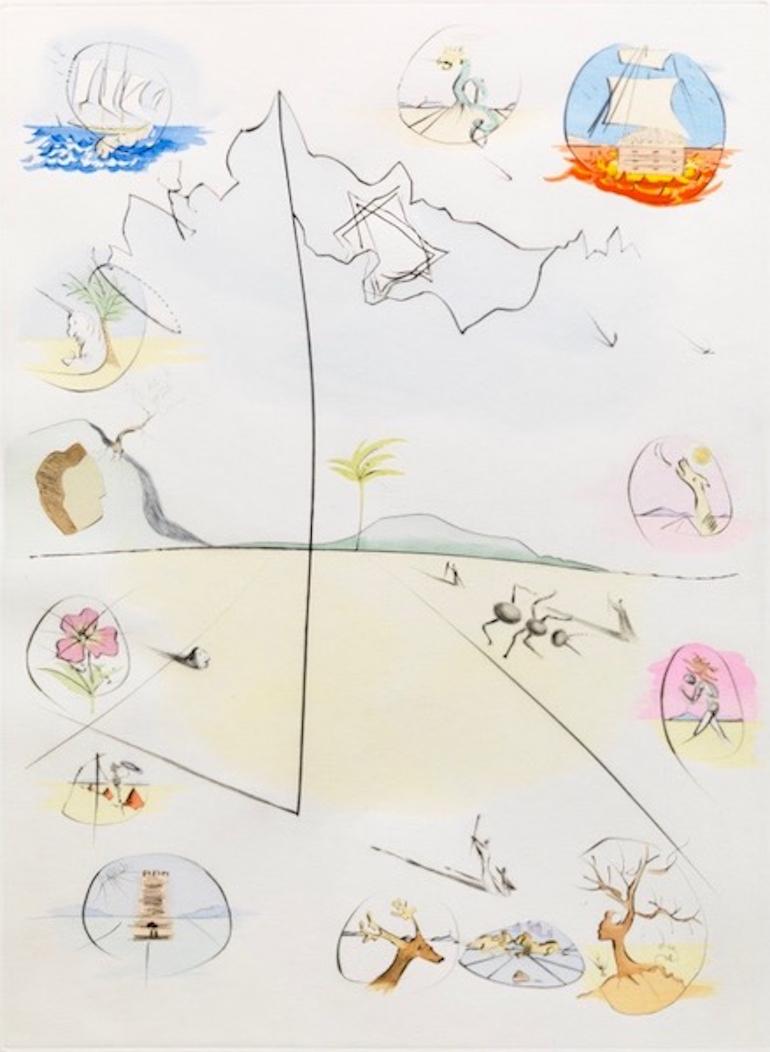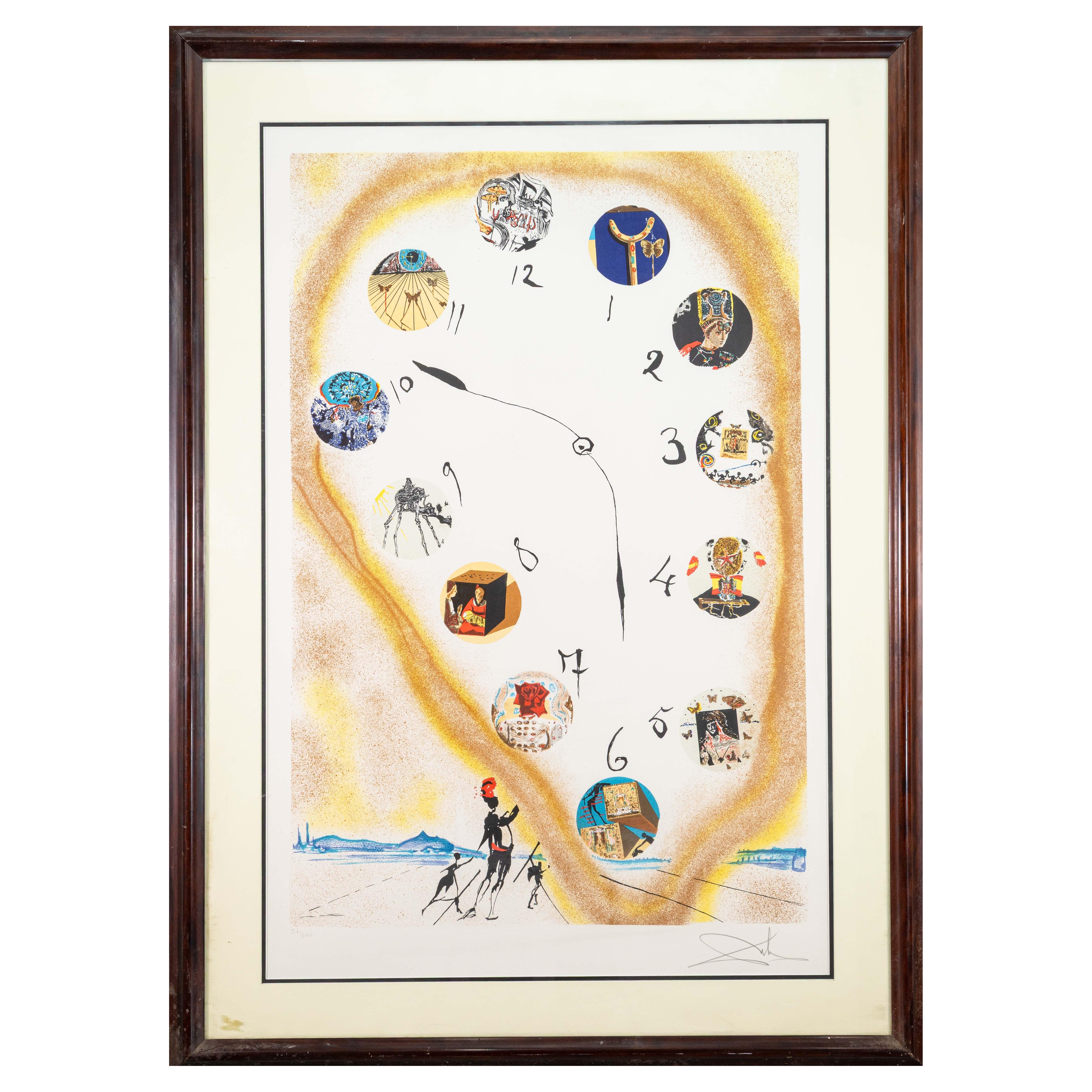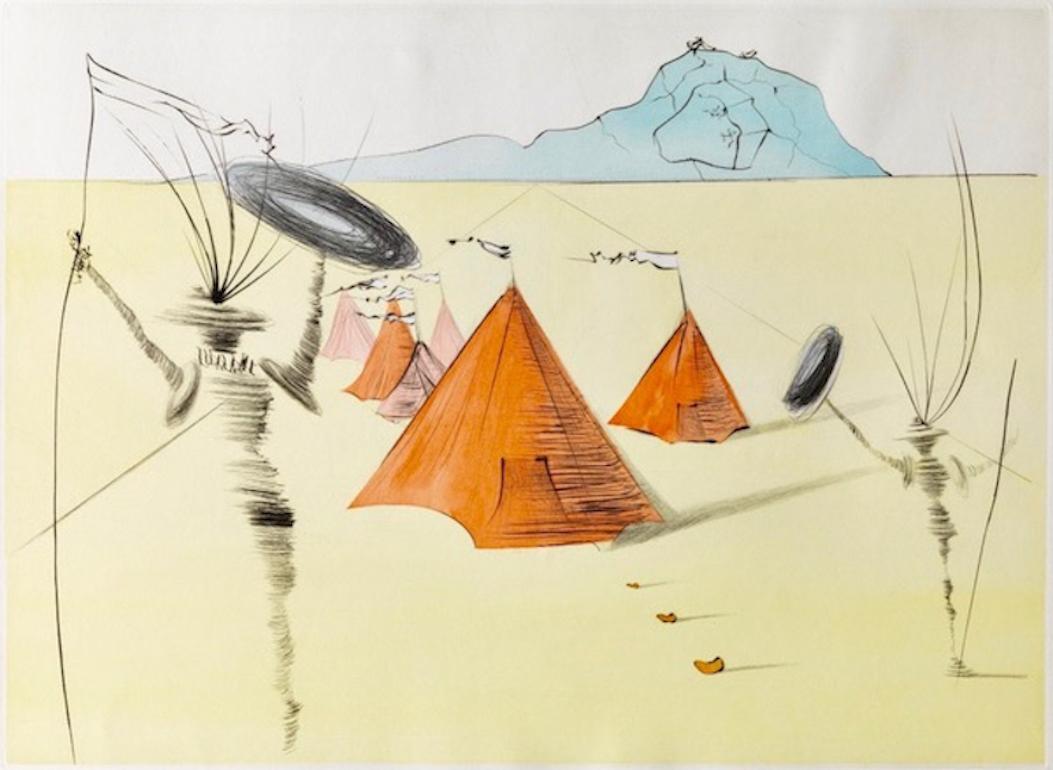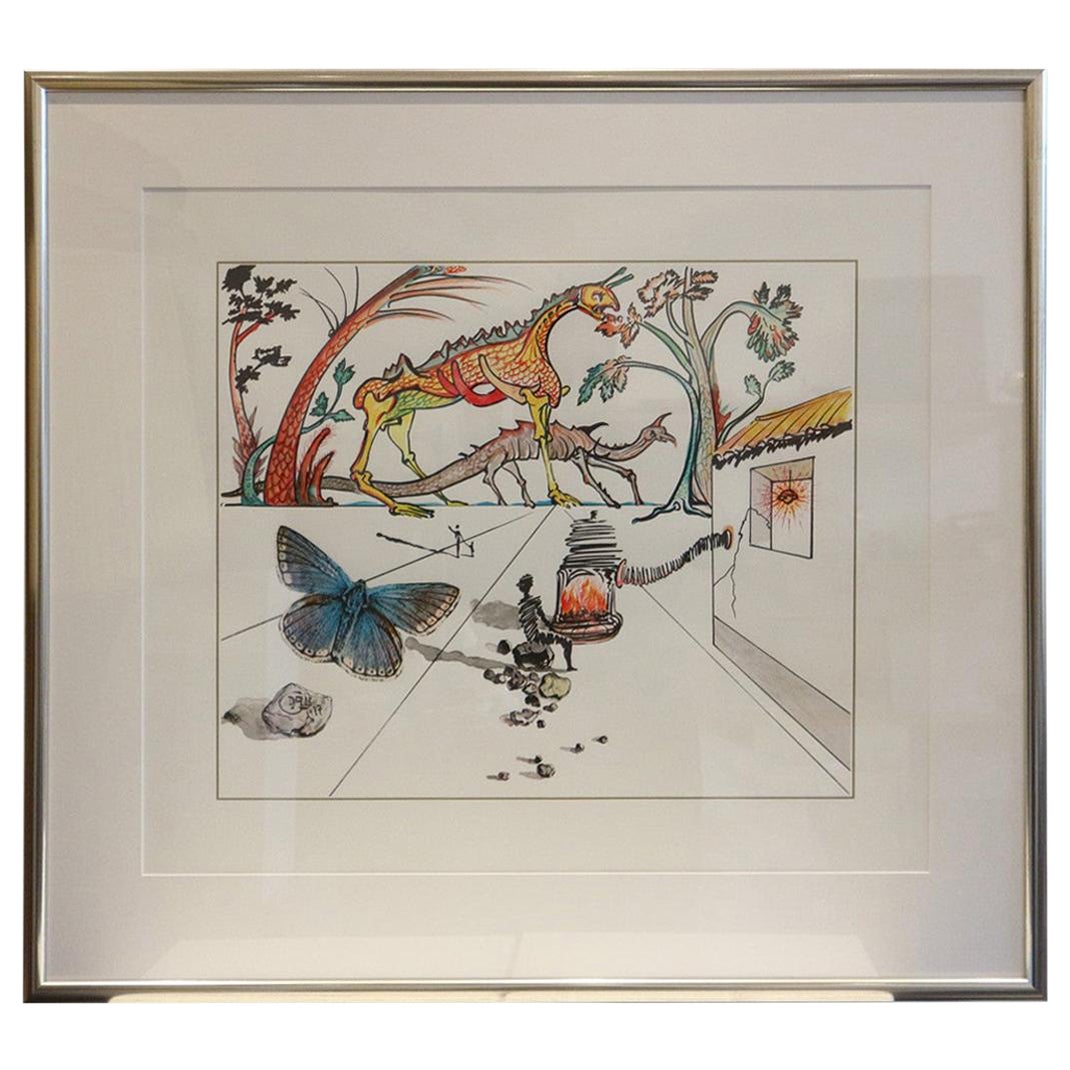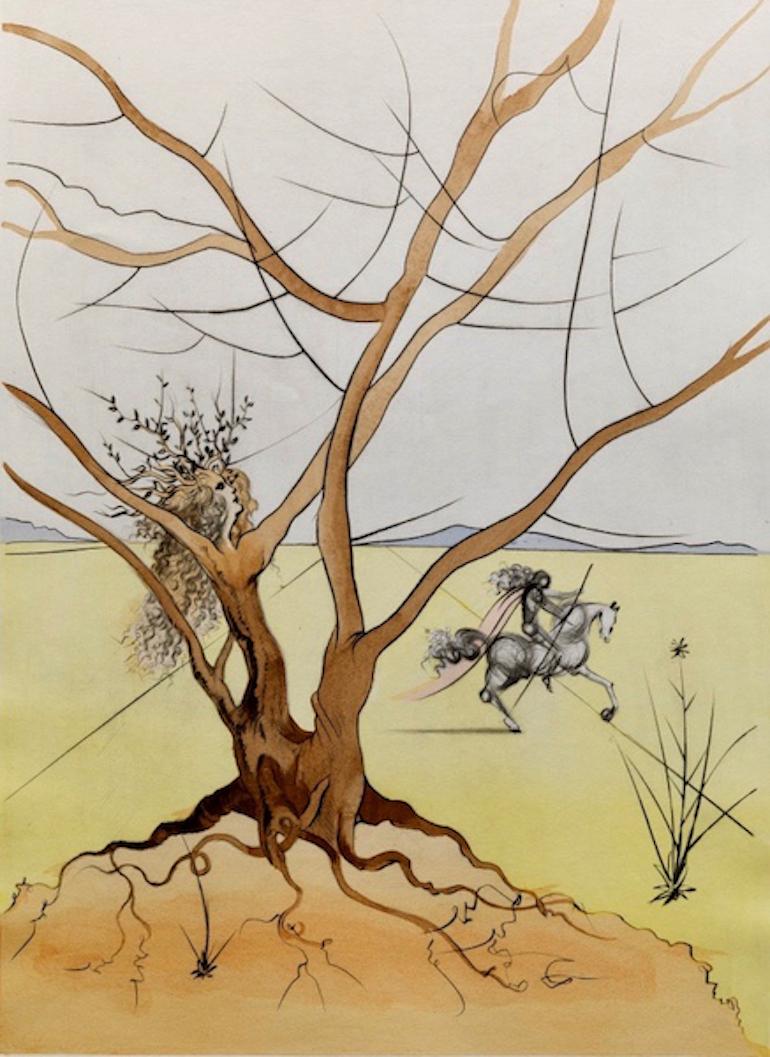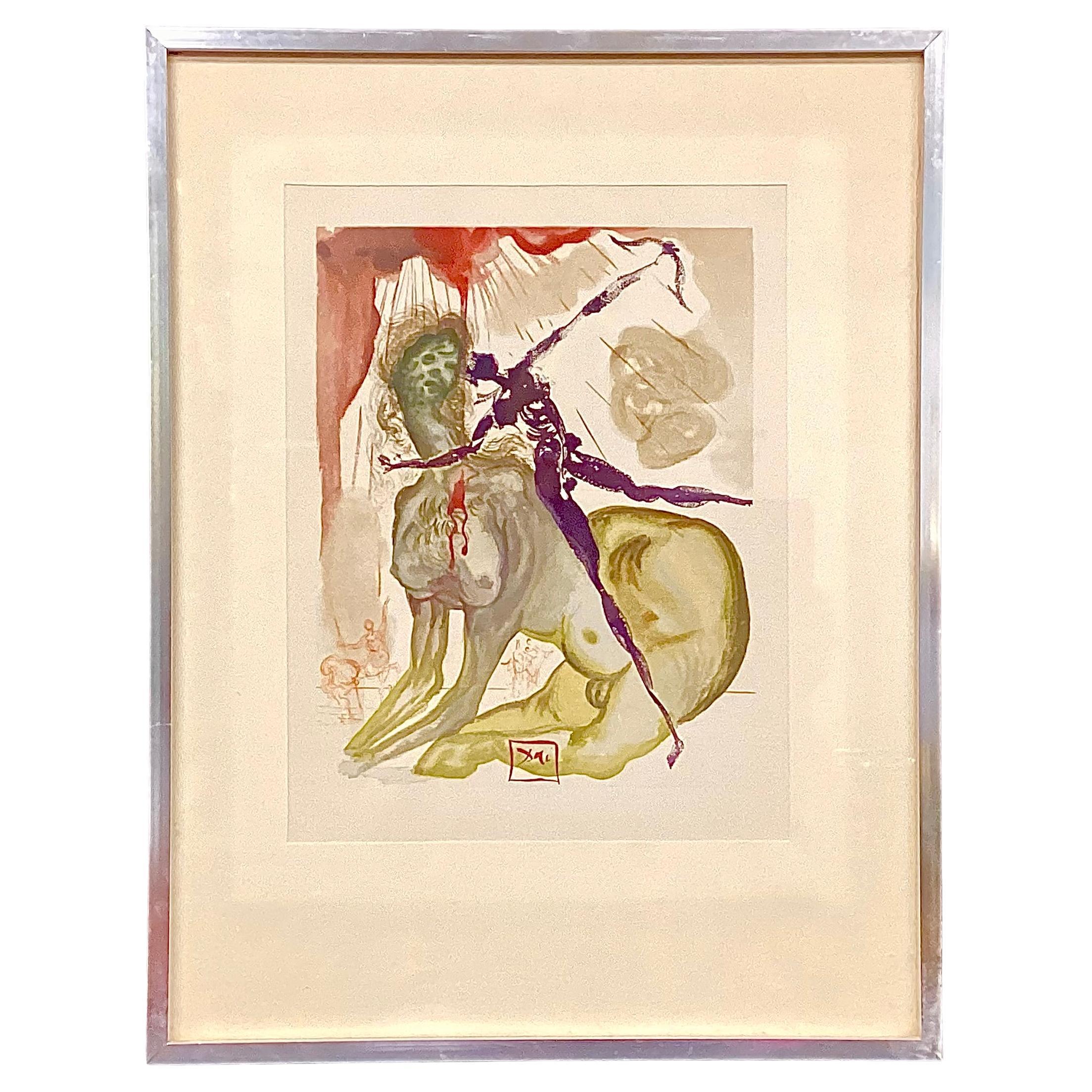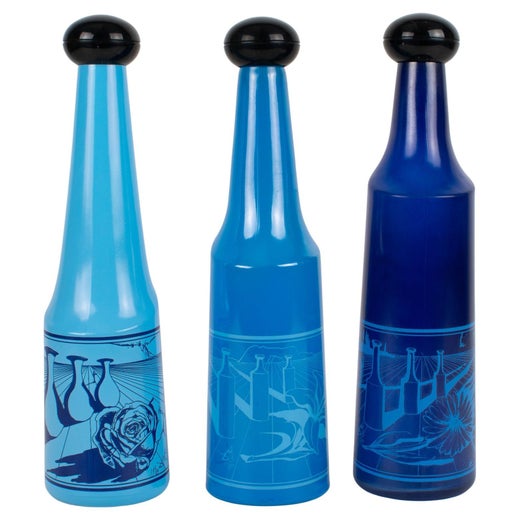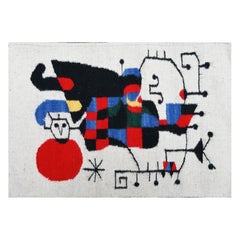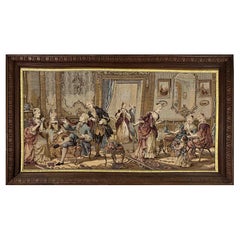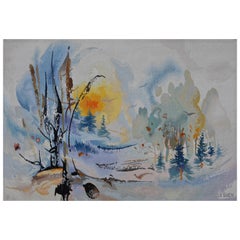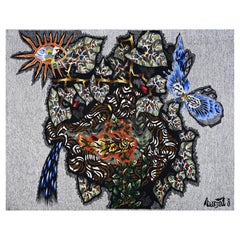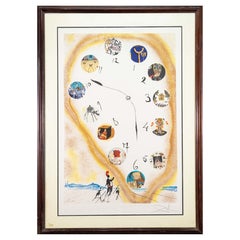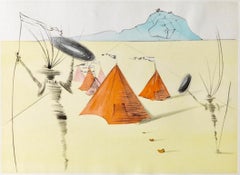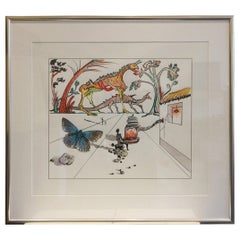Artist: Salvador Dalí
Era: 20th century
Style: Design 50s-60s
Condition: Perfect condition
Material: Tapestry
Width: 130 cm
Height: 180 cm
Depth: 1 cm
The 12 Tribes of Israel, Salvador Dalí – Tapestry with documention complete Bolduc, notarized certificate and ID-Card numbered 116/500 - 126Lx178H
The 12 Tribes of Israel by Salvador Dalí
When Genesis meets surrealism, we get works that are full of color and creativity. A look back at "The 12 Tribes of Israel" through Salvador Dalí's screen prints that depict the famous biblical episode.
In the story of Genesis, the twelve sons of Jacob (also called Israel) founded twelve tribes and shared the promised land. These "founders of the tribes of God" were named Reuben, Simeon, Levi, Judah, Dan, Naphtali, Gad, Asher, Issachar, Zebulun, Joseph and Benjamin.
According to what God had prophesied to Abraham (great-grandfather of the twelve founders of the tribes), his descendants would found many nations. On the occasion of the 25th anniversary of the State of Israel, Salvador Dalí took up the biblical theme to deliver a series of watercolors entitled The 12 Tribes of Israel, in which he represented each of the tribes. His unique style and interpretation of the stories gave life to extraordinary works.
The Tribe of Reuben, It is said that the Tribe of Reuben (in Hebrew Re'uven), when it undertook the exodus to settle in the land of Gilead, numbered 46,500 men. The land of Gilead extended from the Arnon in the south, along the entire coast of the Dead Sea, to the extreme north, where the Jordan flows. Only 43,730 men arrived on this land, the smallest of the lands granted to the tribes.
Tribe of Dan The Tribe of Dan, conquered the city of Laish by razing it. After the massacre, the tribe rebuilt it in the same place, surrounded by fertile land and lush vegetation. It is believed that the episode of the golden calf of Aaron, Moses' brother, took place here.
Tribe of Naphtali When this tribe began its exodus, it numbered 53,000 men, which fell to 45,400 once it reached the north-east of Israel, near the Jordan River and the lakes of Merom and Galilee, in a territory of 800 square kilometers with magnificent landscapes and a mild climate. The beauty of the place was such that the southern part was nicknamed "the garden of Palestine". Now, Naphtali is an almost entirely desert territory, on the shores of the Sea of Galilee, where the city of Tiberias is located.
Tribe of Simeon The tribe of Simeon was divided and scattered, and its numbers diminished as it crossed the desert. Only a third of the tribe arrived in its territory, which was within the territory allotted to Judah in southeastern Israel. The tribes of Simeon and Judah joined forces to lead the capture of Jerusalem together. Like the tribe of Reuben, which settled east of the Jordan, the tribe of Simeon had an influTribe of Levi The tribe of Levi was the tribe historically chosen to form the priestly class of Judaism.
The tribe of Levi, to which Moses belonged, had the exclusive right to learn and teach Torah to the other tribes, but did not own any territory. The symbol of the tribe of Levi is the breastplate of the high priest of the Israelites, and is represented by a square inlaid with 12 precious stones (symbolizing the 12 tribes of Israel).
Tribe of Judah Jacob, his son Judah, and his three grandsons began the exodus to Egypt with 74,000 men. The tribe of Judah had inherited a third of the territory east of the Jordan, which corresponded to about 6,000 square kilometers and was divided into four parts: the south (the Negev) with a large expanse of pasture land, the valley (Sefela), a land extending between the central mountain range and the Mediterranean, the mountain, extending from Hebron to Jerusalem, and finally the desert near the Dead Sea, divided into the desert of "En-gadi", the desert of "Judah" and the desert of "Maon" relatively small in the history of Israel.
Tribe of Asher The tribe of Asher was the most blessed of the tribes of Israel, with the most sons and the most beautiful women. Its territory extended along the Mediterranean Sea, from Mount Carmel to the Leontes River. The land of Asher was so fertile that, in times of shortage of raw materials, it supplied olive oil to the rest of the Israelite territory.
Tribe of Gad The tribe of Gad consisted of 40,000 men who settled on the eastern bank of the Jordan River. The Gad were a warlike tribe that conquered other areas until they joined the Kingdom of Judah. Their red and black emblem features a camp drawn in its center. Moses is said to have been buried in the territory of Gad.
Tribe of Issachar The tribe of Issachar occupied one of the most fertile territories in Israel, which included the Jezreel Valley and the low mountains east of Mount Tabor. Jacob, in the act of blessing his sons before his death, compared Issachar to a strong and bony donkey, an expression that also refers to his tribe.
Tribe of Zebulun The tribe of Zebulun began its exodus with 57,400 men. Its territory was very fertile and extended all the way to Assyria, from the lands near Mount Carmel and the sea to the Sea of Galilee. It also included part of the Plain of Esdraelon and extended all the way to the Mediterranean Sea. This explains how the tribe of Zebulun traded with the other clans.
Tribe of Joseph The descendants of Joseph formed two of the tribes of Israel: the tribe of Ephraim and the tribe of Manasseh. So, in reality, there were technically thirteen tribes, but historically, twelve were always mentioned. The tribe of Ephraim numbered 40,500 men who set out to find the land that had been granted to them, located in the central region of Canaan, west of the Jordan River. Forty years later, when they arrived in the promised land, there were 32,500.
Tribe of Benjamin The tribe of Benjamin was the tribe of Jacob's youngest son, who was 100 years old when his wife Rebekah gave birth. The Benjamins are said to have been brave, cunning, and skillful and were given lands in Jericho that included the hills north of Jerusalem, the cities of Gibeah, Gibeon, Beth-el, and part of the temple district. The first king of Israel, Saul, son of Chis, was from the tribe of Benjamin.
Created at the height of Dali’s surrealist creativity, these screenprints constitute one of his finest bodies of work. Bursting with colour and minutely detailed, these representations are highly significant of his world and include many elements of his visual vocabulary. Motivated by the desire to juxtapose seemingly unrelated images and symbols, Dali succeeded in uniting, transforming and delivering a completely new interpretation of the biblical episode. The artist altered the meaning of the images, their relationship to one another, to essentially create a new concept and a new point of view, always in his inimitable surrealist style.
